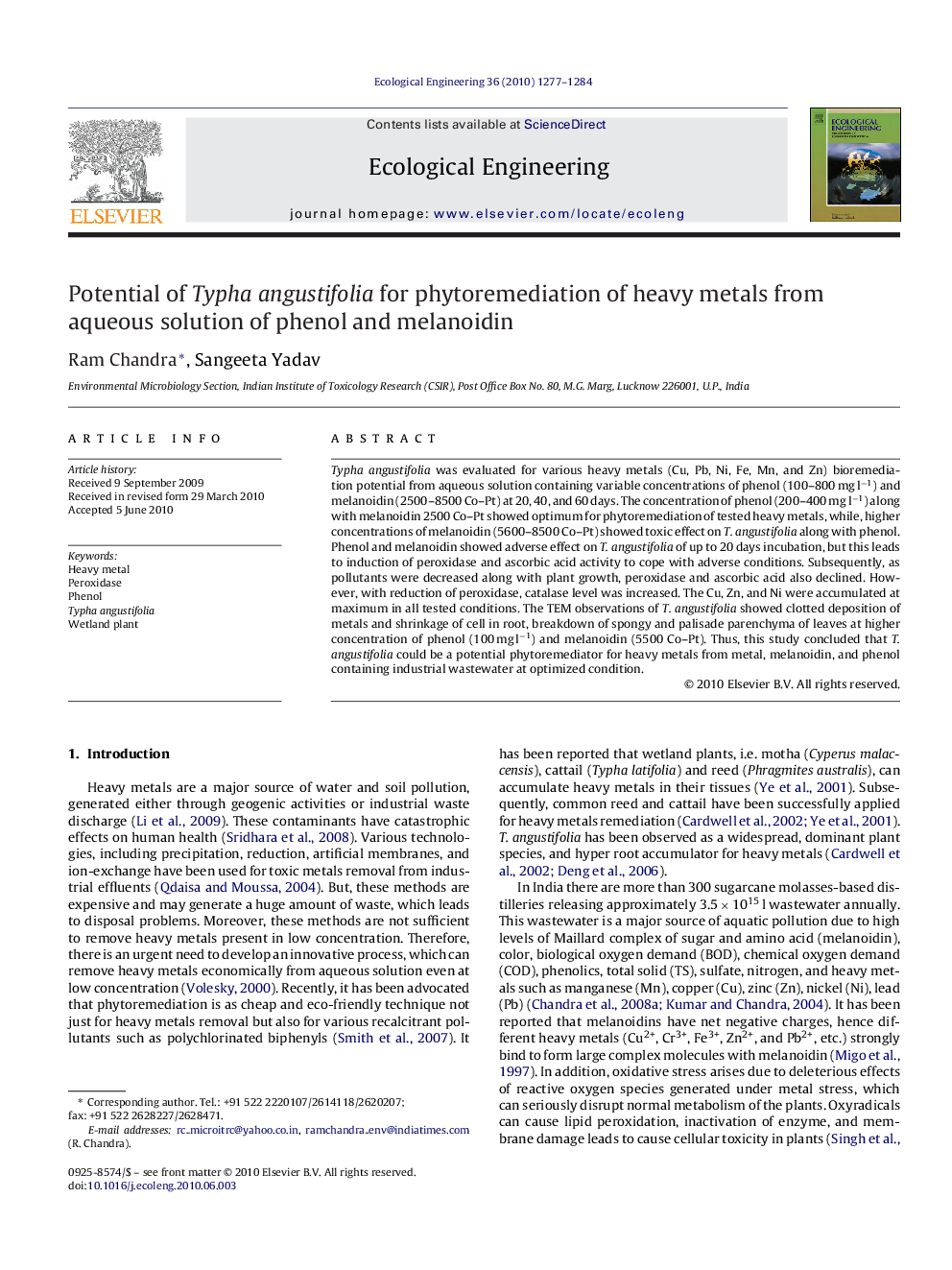| Article ID | Journal | Published Year | Pages | File Type |
|---|---|---|---|---|
| 4390574 | Ecological Engineering | 2010 | 8 Pages |
Typha angustifolia was evaluated for various heavy metals (Cu, Pb, Ni, Fe, Mn, and Zn) bioremediation potential from aqueous solution containing variable concentrations of phenol (100–800 mg l−1) and melanoidin (2500–8500 Co–Pt) at 20, 40, and 60 days. The concentration of phenol (200–400 mg l−1) along with melanoidin 2500 Co–Pt showed optimum for phytoremediation of tested heavy metals, while, higher concentrations of melanoidin (5600–8500 Co–Pt) showed toxic effect on T. angustifolia along with phenol. Phenol and melanoidin showed adverse effect on T. angustifolia of up to 20 days incubation, but this leads to induction of peroxidase and ascorbic acid activity to cope with adverse conditions. Subsequently, as pollutants were decreased along with plant growth, peroxidase and ascorbic acid also declined. However, with reduction of peroxidase, catalase level was increased. The Cu, Zn, and Ni were accumulated at maximum in all tested conditions. The TEM observations of T. angustifolia showed clotted deposition of metals and shrinkage of cell in root, breakdown of spongy and palisade parenchyma of leaves at higher concentration of phenol (100 mg l−1) and melanoidin (5500 Co–Pt). Thus, this study concluded that T. angustifolia could be a potential phytoremediator for heavy metals from metal, melanoidin, and phenol containing industrial wastewater at optimized condition.
